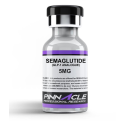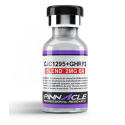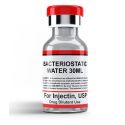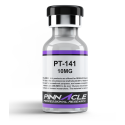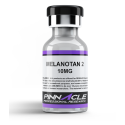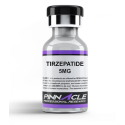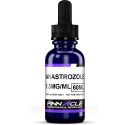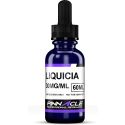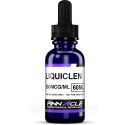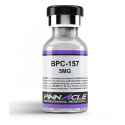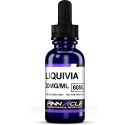Liquid Cialis (Tadalafil): A Convenient New Option for Treating Erectile Dysfunction
This website's contents, articles and product information are all provided purely for educational and informational purposes. The products that are offered on this platform are only meant to be used in in vitro research. The word "in vitro," which comes from the Latin "in glass," describes research that is done outside of a living creature. It is important to remember that these products are not pharmaceuticals or medicines, and the FDA has not approved them for use in the diagnosis, treatment, or prevention of any illnesses or disorders. It is legally forbidden for these goods to be ingested by humans or animals.
Erectile dysfunction (ED), commonly known as impotence, affects millions of men worldwide. Characterized by the inability to get or maintain an erection firm enough for sexual activity, ED can significantly impact a man's quality of life and emotional well-being. Thankfully, effective treatments are available, including a new liquid formulation called Liquid Cialis or LiquiCia that provides an easy-to-use dosing alternative.
Understanding Erectile Dysfunction
Erectile dysfunction involves more than just the physical inability to get an erection. It also encompasses the emotional, mental, and social aspects that can impair male sexual performance and satisfaction.
Some key facts about erectile dysfunction:
- Affects 30 million men in the United States alone (1)
- Has physical causes like vascular disease, neIncreases in prevalence with age, affecting around 40% of men by age 40 (2)
- urological disorders, side effects of medications, etc.
- Also has psychological components like performance anxiety, stress, depression
- Negatively impacts relationships, self-esteem, and overall wellbeing
While a normal part of aging, ED should not just be accepted as an inevitable condition. Thankfully, various pharmaceutical options are available to help men restore their sexual function and confidence.
Cialis (Tadalafil) for Treating ED
One of the most well-known prescription medications for ED is Cialis, which contains the active ingredient tadalafil. Some key facts about this widely used phosphodiesterase type 5 (PDE5) inhibitor:
- Approved by FDA in 2003 for treating ED (3)
- Available in tablet form in various dosages (2.5mg, 5mg, 10mg, 20mg)
- Allows ability to get erection anytime between 30 minutes to 36 hours after taking it
- Remains effective for up to 36 hours, allowing more spontaneity
- Can be taken with or without food
- Common side effects include headache, indigestion, back pain, flushing
- Should not be taken with nitrates or by individuals with severe liver/kidney problems
Liquid Cialis provides an alternative delivery method that may be easier to swallow than tablets for some patients. It contains the same active ingredient, tadalafil, in a liquid suspension form.
Some advantages of the liquid formulation:
- Easier to swallow than tablets
- Allows for flexible/precise dosing
- May have faster absorption and quicker onset of action
- Can be mixed with soft foods/drinks if needed
With a long duration of action and liquid alternative, Cialis offers an effective and convenient treatment option for managing erectile dysfunction. However, it's important to understand how this medication works on a physiological level.
Here is the next section covering the mechanism of action of Cialis:
Mechanism of Action: How Cialis Works
To understand how Cialis treats erectile dysfunction, it's important to first understand the physiology of how an erection occurs.
The sequence of events leading to an erection includes:
- Sexual arousal - This triggers the release of nitric oxide which allows blood vessels to relax and increase blood flow.
- Increased blood flow - Relaxed penile arteries allow more blood to fill the erectile tissues in the penis.
- Restricted blood drainage - Veins are compressed to restrict blood leaving the penis and maintain the erection. (4)
In individuals with ED, this sequence of events is impaired. Cialis helps facilitate this process through its mechanism of action:
- It is a PDE5 inhibitor - it blocks the PDE5 enzyme which normally breaks down cGMP.
- Higher cGMP levels lead to relaxed smooth muscle cells and increased blood flow to the penis.
- It only works with sexual stimulation - nitric oxide release is still required for the cascade reaction.
- Provides a 36 hour window of effectiveness.
- It does not increase sexual desire - it only facilitates the erection response.
So in summary, Cialis enhances the erectile response by inhibiting PDE5 and allowing increased blood flow. But it relies on initial sexual arousal to activate the NO-cGMP pathway. This is how it differs from aphrodisiac substances.
The prolonged 36-hour window of effectiveness makes Cialis unique among PDE5 inhibitors. Let's explore more about its long-term efficacy next.
Here is the next section covering the long-term effectiveness of Cialis:
Long-term Effectiveness of Cialis
In addition to its 36-hour window of action, one of the distinct advantages of Cialis is that its efficacy does not appear to diminish with prolonged use.
Multiple clinical studies have shown that Cialis maintains its effectiveness long-term:
- In a 2-year open label study, efficacy was maintained in patients taking Cialis on demand. No evidence was found of tolerance development. (5)
- A 5-year observational study again showed no loss of effectiveness over time with on-demand Cialis use. (6)
- In studies up to 4 years, there was no attenuation in efficacy with daily use of Cialis 5mg. (7)
Some key factors contributing to the lasting effects of Cialis:
- It has a long half-life of 17.5 hours, staying in the body longer.
- It has a prolonged mechanism of action on PDE5 enzymes.
- There is no development of tachyphylaxis or tolerance over time.
The liquid formulation may offer some additional advantages:
- Faster absorption due to bypassing the digestive system.
- Quicker onset with some reports of action within 10-15 minutes.
- Ability to fine-tune dosing to the optimal amount.
So in summary, Cialis remains effective with long-term use without any observed loss of efficacy over time. This distinguishes it from shorter-acting ED treatments.
Here is the next section covering the potential side effects and risks of using Cialis:
Potential Side Effects and Risks of Cialis
While generally safe and well-tolerated, Cialis does carry a risk of side effects - like all medications. It's important to be aware of the potential adverse reactions.
Common side effects of Cialis include:
- Headache - reported in around 12% of users (8)
- Indigestion (dyspepsia) - around 7% of users
- Back pain - around 6%
- Muscle aches - around 5%
- Nasal congestion - around 1-10%
- Flushing
These adverse effects are usually mild and tend to dissipate with continued use. Taking the dose with food can help reduce these side effects.
Less common side effects can include:
- Vision changes - blurred vision, light sensitivity
- Ringing in the ears (tinnitus)
- Rash or itching
- Vertigo
- Dry mouth
Rare but serious side effects requiring urgent medical care:
- Priapism - prolonged, painful erection lasting over 4 hours
- Sudden loss of vision - due to nonarteritic ischemic optic neuropathy (NAION)
- Sudden decrease in hearing
- Allergic reactions - swelling, hives, rash, difficulty breathing
There are also some risks and contraindications to be aware of:
- Should not be used with nitrate medications due to severe hypotension risk
- Caution advised in patients with cardiovascular disease
- Not recommended with severe liver or kidney impairment
- Potential for adverse drug interactions and precautions needed
Proper dosage and administration guidelines should be followed closely to minimize side effect risks when using Cialis. Let's go over those recommendations next.
Dosage and Administration of Cialis
Cialis comes in various tablet strengths, allowing dosage to be individualized based on patient needs and responsiveness:
- Cialis for ED: Recommended starting dose is 10mg taken orally approximately 30 minutes prior to sexual activity.
- Effectiveness lasts for up to 36 hours.
- Available in 2.5mg, 5mg, 10mg, 20mg tablets.
- Maximum recommended dose is 20mg as needed.
- Can be taken with or without food.
- Cialis for daily use: 2.5mg or 5mg tablet taken once per day.
- Steady amount in system for spontaneity rather than planned dosing.
- Takes 5 days to reach steady state concentration.
- Liquid Cialis: Typically comes in a 5mg/mL solution.
- Dose measured with dropper based on prescription instructions.
- Allows precise titration of dosage.
Some important administration guidelines:
- Take exactly as prescribed by the physician.
- Never exceed the maximum recommended dose.
- Ideal to take at the same time each day for daily use.
- Missed doses can still be taken later if within a 36 hour window.
- May require dosage adjustments based on individual factors.
- Use with caution in mild-moderate kidney/liver impairment.
- Contraindicated with severe kidney/liver dysfunction.
Proper dosage allows patients to optimize effectiveness while minimizing side effect risks. Doctors can provide instructions tailored to individual health factors. Ongoing communication with one's physician is advised.
Common and Serious Side Effects of Cialis
As discussed previously, Cialis may cause certain adverse reactions ranging from mild to severe. It's helpful to summarize the common and serious side effects again:
Common Side Effects
These occur frequently but are generally mild and temporary:
- Headache (around 12% of users)
- Indigestion (around 7% of users)
- Back pain (around 6% of users)
- Muscle aches (around 5% of users)
- Flushing
- Nasal congestion
Rare but Serious Side Effects
These are less common but can be severe and require urgent care:
- Priapism - prolonged, painful erection lasting over 4 hours
- Sudden loss of vision due to NAION
- Sudden decrease in hearing
- Allergic reactions - swelling, hives, rash, trouble breathing
Contraindications
Cialis should not be used in these cases due to risks:
- Concurrently with nitrate medications
- Severe liver impairment
- Severe kidney impairment
- Known hypersensitivity to tadalafil
Precautions
Use with caution in:
- Cardiovascular disease, angina, heart attacks
- Liver or kidney dysfunction
- History of vision problems like retinitis pigmentosa
- History of bleeding disorders
- History of stomach ulcers
Being aware of these side effect profiles can help identify any emergent reactions requiring prompt medical intervention. Patients should discuss their complete medical history with their doctor. Ongoing monitoring of side effects is important with continued use of Cialis.
Here is the next section covering the uses of Cialis beyond erectile dysfunction:
Uses of Cialis Beyond Erectile Dysfunction
While best known for treating erectile dysfunction, Cialis has also been approved for other indications at different dosages:
Benign Prostatic Hyperplasia (BPH)
- Enlarged prostate gland causing urinary symptoms.
- Cialis improves blood flow and relaxes muscles in the prostate and bladder.
- Typically prescribed at a 5mg daily dose.
Pulmonary Arterial Hypertension (PAH)
- Rare condition with high blood pressure in the lungs.
- Cialis blocks an enzyme that causes tightening of blood vessels.
- Prescribed at 20mg daily dose.
For these conditions, lower Cialis doses are used compared to for ED treatment. The mechanism of action targets smooth muscle relaxation in the prostate and pulmonary blood vessels.
Off-Label Uses
Cialis is also sometimes used off-label for:
- Raynaud's Phenomenon - improves circulation in fingers/toes
- Altitude Sickness Prophylaxis - prevents symptoms at high altitudes
However, these off-label uses have not been approved by the FDA and better alternatives may exist. Caution is advised.
While tadalafil was originally developed for hypertension and angina, its indications evolved to predominantly focus on sexual function. But at varying doses, it can provide vascular and smooth muscle benefits beyond ED treatment.
Here is the next section covering drug interactions and health conditions to be aware of with Cialis use:
Drug Interactions and Health Conditions with Cialis
There are some important drug interactions and health conditions to consider before using Cialis:
Drug Interactions
- Nitrates - severe hypotension risk, contraindicated
- Alpha-blockers - increased hypotensive effects
- CYP3A4 inhibitors - higher Cialis levels, dose adjustment may be needed with erythromycin, ketoconazole, itraconazole, ritonavir
- CYP3A4 inducers - lower Cialis levels, may be less effective with rifampin, phenytoin, carbamazepine
- Alcohol - increased side effects like hypotension
Health Conditions
- Cardiovascular disease - increased risk of hypotension, chest pain, stroke, heart attack
- Pulmonary veno-occlusive disease - serious heart and lung problems, contraindicated
- Renal impairment - increased tadalfil levels, risk of adverse effects
- Hepatic impairment - decreased clearance from body, dose adjustment needed
- Priapism disorders - increased risk of painful, prolonged erection
- Penile structural abnormalities - increased risk of injury with erection
Precautions
- Underlying eye problems like retinitis pigmentosa, NAION, or visual loss - small risk of sudden vision loss
- Bleeding disorders like hemophilia - increased bleeding risk with trauma
- Stomach/duodenal ulcers - increased risk of bleeding
- Allergies to Cialis ingredients
Checking for drug interactions and monitoring health conditions is vital when taking Cialis. Let your doctor know your full medical history. Seek immediate care if serious side effects occur. Ongoing medical supervision is recommended.
Here is the next section covering proper storage and shelf life of Cialis:
Proper Storage and Shelf Life of Cialis
Like any medication, proper storage and adhering to expiration dates is important to ensure Cialis remains safe and effective to use.
Storage Guidelines
- Store at controlled room temperature between 15°C and 30°C (59°F and 86°F).
- Protect from excessive heat or moisture
- Do not store in the bathroom as heat and humidity can degrade it.
- Keep out of reach of children and pets.
- Store tablets in original light-resistant packaging until use.
Shelf Life
- Tablets are typically good for 2-3 years from the manufactured date.
- Liquid has around an 18 month shelf life if stored properly.
- Check expiration date on packaging and do not use expired product.
- Properly dispose of any expired or unused Cialis.
- Contact pharmacist if tablets look discolored or damaged.
Proper in-home storage along with adhering to expiration dates helps maintain the potency and integrity of Cialis formulations. Always keep medications safely out of reach of children and pets. Dispose of any expired or unwanted medications appropriately.
Here is the next section covering Cialis and cardiovascular health:
Cialis and Cardiovascular Health
Cialis can have effects on cardiovascular health that are important to consider:
Blood Pressure Effects
- Cialis can cause mild blood pressure lowering effects in some individuals due to vasodilation.
- This can become exacerbated if used with other blood pressure medications.
- Those already on antihypertensives should be monitored for additive hypotensive effects.
Cardiac Risks
- Cialis is contraindicated in patients taking nitrates due to severe hypotension risk.
- There may be an increased risk of MI (heart attack) or stroke in those with heart disease using Cialis, especially with sexual activity.
- Avoid use within 6 months of a cardiac event like MI, CVA, or life-threatening arrhythmia.
Warning Signs to Monitor
Patients should seek immediate medical care if they experience:
- Chest pain, dizziness, or nausea during sex - signs of cardiac ischemia.
- Fainting or sudden vision changes - signs of severely low blood pressure.
- Palpitations or irregular heartbeat - signs of arrhythmia.
- Prolonged erection over 4 hours - sign of priapism requiring urgent treatment.
Precautions
Those with the following conditions should use Cialis with caution:
- Unstable angina or cardiac ischemia
- Congestive heart failure
- Uncontrolled arrhythmias
- Hypertrophic cardiomyopathy
- Aortic stenosis
- Pulmonary veno-occlusive disease
Ongoing cardiovascular monitoring is important if using Cialis with pre-existing heart conditions. Let your doctor know about any chest pain, dizziness, or irregular heartbeats occurring with use.
Here is the final section providing a summary and conclusion:
Summary and Conclusion
In summary, Cialis (tadalafil) is an effective and widely used treatment option for erectile dysfunction in men. It helps facilitate the erection process by blocking PDE5 enzymes and enhancing blood flow.
Key advantages of Cialis include:
- Long duration of action - remains effective for up to 36 hours
- Does not lose efficacy with prolonged use
- Allows for spontaneous rather than planned sexual activity
- Available in tablet form and convenient new liquid formulation
- Can be used for ED as well as BPH and PAH at varying doses
However, some considerations include:
- Potential for side effects like headache, indigestion, back pain
- Small risk of serious adverse effects requiring urgent care
- Contraindicated with nitrate drugs and severe kidney/liver dysfunction
- Interacts with many medications; need to check for CYP450 interactions
- Use cautiously in patients with cardiovascular conditions
- Requires proper storage away from heat, moisture and children
When used correctly under medical supervision, Cialis can help restore sexual function and confidence. Proper dosage, awareness of risks, and ongoing monitoring is key. Overall, Cialis remains a safe, reliable, and convenient treatment option for ED.
Referenced Citations
- https://www.niddk.nih.gov/health-information/urologic-diseases/erectile-dysfunction
- https://www.ncbi.nlm.nih.gov/pmc/articles/PMC5472936/
- https://www.accessdata.fda.gov/drugsatfda_docs/label/2011/021368s20s21lbl.pdf
- https://www.ncbi.nlm.nih.gov/books/NBK541120/
- https://pubmed.ncbi.nlm.nih.gov/17214405/
- https://pubmed.ncbi.nlm.nih.gov/22789024/
- https://www.ncbi.nlm.nih.gov/pmc/articles/PMC5472924/
- https://www.ncbi.nlm.nih.gov/books/NBK535421/



